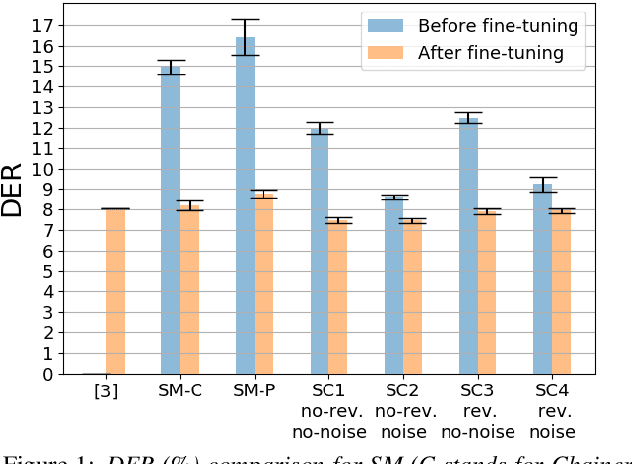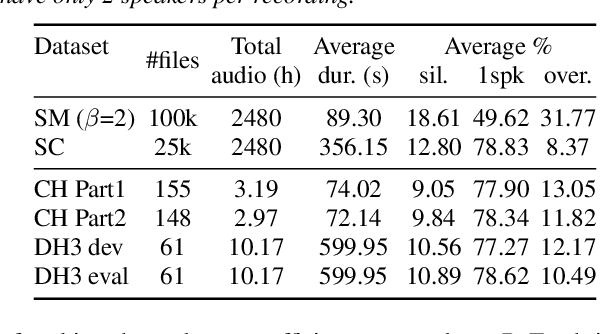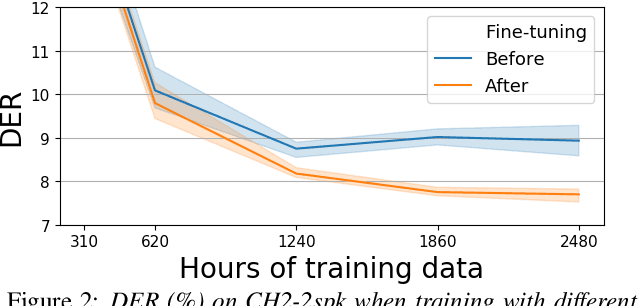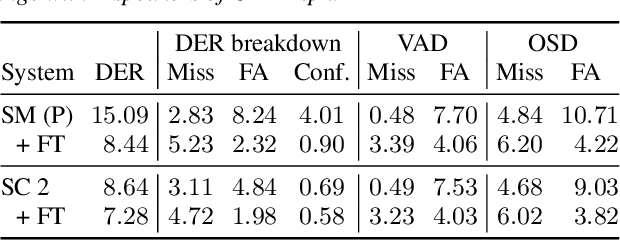From Simulated Mixtures to Simulated Conversations as Training Data for End-to-End Neural Diarization
Paper and Code
Apr 02, 2022



End-to-end neural diarization (EEND) is nowadays one of the most prominent research topics in speaker diarization. EEND presents an attractive alternative to standard cascaded diarization systems since a single system is trained at once to deal with the whole diarization problem. Several EEND variants and approaches are being proposed, however, all these models require large amounts of annotated data for training but available annotated data are scarce. Thus, EEND works have used mostly simulated mixtures for training. However, simulated mixtures do not resemble real conversations in many aspects. In this work we present an alternative method for creating synthetic conversations that resemble real ones by using statistics about distributions of pauses and overlaps estimated on genuine conversations. Furthermore, we analyze the effect of the source of the statistics, different augmentations and amounts of data. We demonstrate that our approach performs substantially better than the original one, while reducing the dependence on the fine-tuning stage. Experiments are carried out on 2-speaker telephone conversations of Callhome and DIHARD 3. Together with this publication, we release our implementations of EEND and the method for creating simulated conversations.
 Add to Chrome
Add to Chrome Add to Firefox
Add to Firefox Add to Edge
Add to Edge